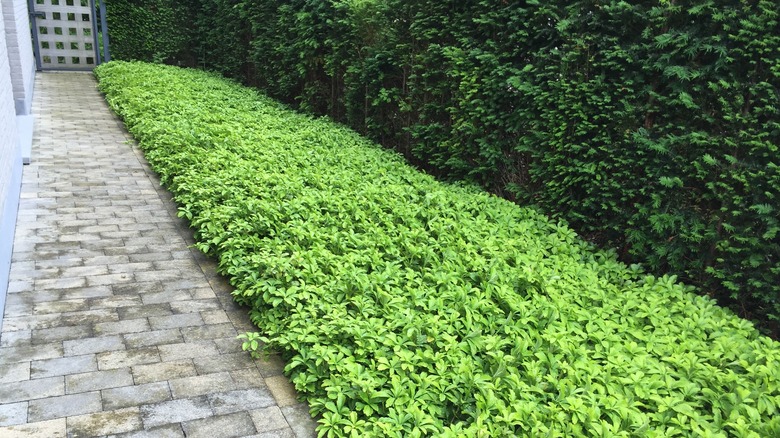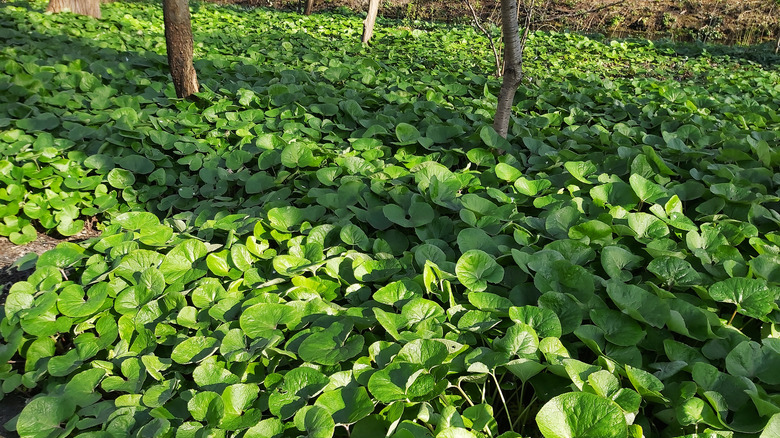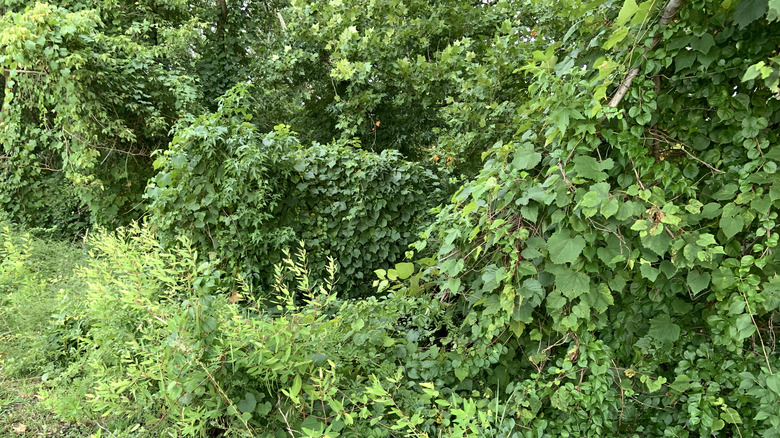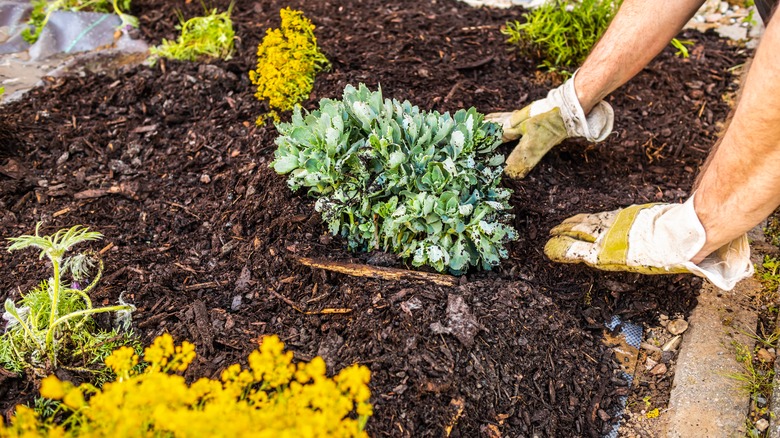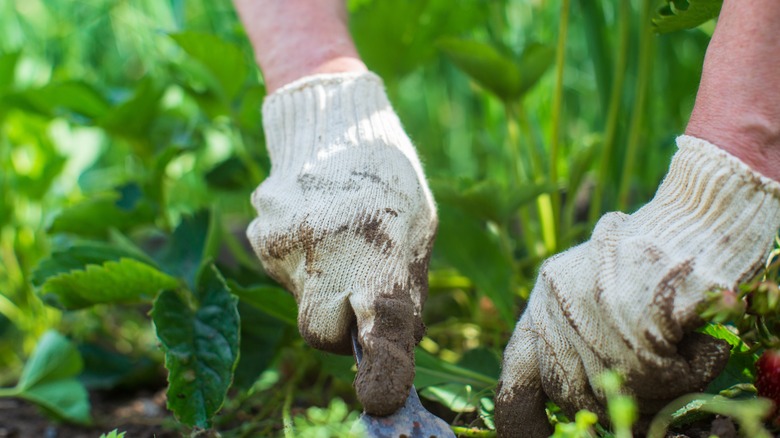Tips And Tricks For Growing Thriving Ground Cover Plants In Your Yard
Ground cover plants are a great option for solving a ton of landscaping problems. Aesthetically, they can help define a space, add depth and layers to your garden, or provide year-round color. Environmentally, they can be used for erosion or weed control. They're also an easy way to fill in some of the more challenging areas in your yard. Do you want evergreen ground covers for stunning cover all year round? There are plenty of options out there. Are you looking for easy-to-grow ground cover plants that thrive around tree roots? You can find a plant for that, too.
Regardless of your goals for adding ground cover to your garden, it's important to make sure you choose the right plant for the spot. That includes avoiding potentially invasive species that might spread far beyond the area you're trying to cover. You should also take steps to prepare the site before planting and be ready to weed the area and water regularly for the first year or two. Ground cover plants may have a reputation for being low maintenance, but they still need a little care at the beginning to become well-established. The effort is worth it, though, as you'll soon have a thriving bed of ground cover that will last for years to come.
Choose the right ground cover for the spot
You can save yourself a lot of headache by embracing the conditions that exist in your yard and choosing a plant that will naturally thrive in those areas. If it's a soggy, shady area, don't try to force a sun-loving plant from the desert to grow there. Instead, choose a shade-loving ground cover that prefers wet soil.
For yards with a mix of conditions, like patches of full sun and dense shade, opt for multiple types of plants. Even a single species can tolerate a wide variety of different conditions, although it may not look equally lush in the more challenging areas as it does in the areas that better match its preferences. By selecting a different plants for the unique conditions throughout your yard, you can more easily create a full, healthy ground cover that fills your yard and requires minimal maintenance.
No matter what your goals are or how challenging the location is, you can likely find the perfect species to fill in that spot with a little research. For gardeners in North America, a good place to start the search is the Native Plants Database or the USDA Plants Database. Both allow you to filter results by light requirements, soil conditions, growth habit, and other key criteria to help you narrow down the results to the plants best suited to your yard.
Avoid invasive species
If you're looking for a fast-growing ground cover to fill in a large area quickly, consider the long-term implications of its fast-spreading growth habit. They might fill the area quickly, but they're also likely to spread beyond it and take over. So, you may have choked out the weeds you were dealing with before, but now you've taken on a new chore of constantly trimming back runners or pulling out seedlings from your ground cover plant.
With that said, there are ways to get good coverage relatively quickly without relying on a potentially invasive species. First, see if you can find native ground cover alternatives that look similar to the invasive species but are less likely to grow out of control. Another option is to choose a ground cover that spreads primarily by seed. Then, be sure to deadhead the flowers to prevent it from producing those seeds. For plants that tolerate it, mowing occasionally through the growing season can help keep the ground cover in check. For those that spread by rhizomes or stolons, installing garden edging around the area that's both deep enough and tall enough to contain runners can help keep the ground cover contained to the area.
Finally, you can try mixing multiple types of plants in the same area. For example, plant two or more fast-spreading species in the same area and let them duke it out. The competition can help keep all kinds of ground covers in check.
Don't skip soil preparation
Good soil preparation is key, even if you've chosen a species that will thrive in the conditions you already have, it still needs time to get established. The less competition from weeds and other adversities your plants have to deal with in the early stages, the more they'll be able to focus on developing strong, healthy roots.
The exact type of soil preparation you need to do will depend on the site. However, this process typically involves clearing out any plants that are currently growing there. Depending on the size of the area, you can do this by simple hand-pulling, applying herbicide, or by a low-effort technique like solarization.
Once the weeds are gone, you also might need to till the area a bit to break up compacted soil or get rid of rocks or roots. In general, you only need to do this to a depth of 8 to 10 inches. As you work the soil, incorporate a two-inch layer of compost into it. In clay soils, the organic matter will help improve drainage. In sandy soils, that same organic matter will help improve moisture retention. Either way, this step can help create optimal conditions for the roots of your new ground cover plants.
Mulch deeply until your ground cover is established
Whether you're planting in spring or fall, a generous layer of mulch can help newly-planted ground cover plants get off to the best possible start. A two-inch layer of mulch helps hold in moisture and stabilize soil temperatures, protecting roots from excessive heat in the summer and excessive cold in the winter. During the growing season, this thick layer of mulch will also reduce the amount of weeds that grow in the area. This gives your new ground cover plants time to get established without intense competition from weeds.
You can use just about anything you like for mulch. While synthetic mulches exist, an organic mulch like wood chips, pine needles, grass clippings, or leaves will decompose over time, adding nutrients to the soil. Since you won't need to rely on mulch as much once your new ground cover fills in, an organic mulch that eventually breaks down and incorporates into the soil is most convenient.
For gardeners on a budget, wait until fall and use the leaves you're raking off your lawn as mulch. You might also be able to get free wood chips from local tree trimming companies or by signing up with a site like Chipdrop.
Water and weed now for low-maintenance later
Many gardeners want ground cover plants to be a low-maintenance, long-lasting addition to the garden. To get there, they need a little coddling at the beginning until they're healthy enough to crowd out the competition on their own and endure whatever extreme weather conditions you face in your climate.
For the first year or two of their life, you should remove weeds regularly and water between rainy days to prevent your new ground cover from experiencing a drought. If you live somewhere with extreme heat, set up temporary shade to protect the plants during the hottest part of the day. In places that deal with long freezes during the winter, you might cover your plants with burlap or another fabric to protect them from frost damage.
Once they're well-established, you can ease up on the care. Assuming you chose the right species for the spot, the established plant should be able to thrive on the rainfall and soil type in that site without any extra help from you. At that point, you can just prune as needed and keep an eye on it during extreme weather to see if it needs a little help now and then.
